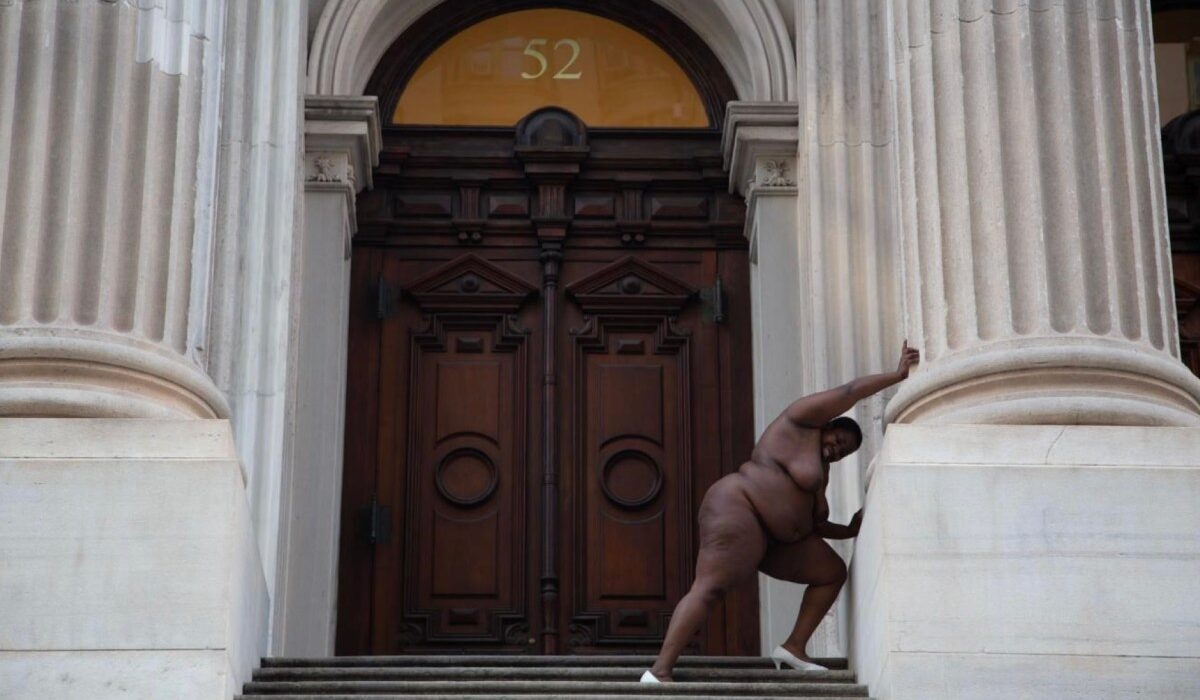Nona Faustine (born Brooklyn, NY, 1977). They Tagged the Land with Trophies and Institutions from Their Rapes and Conquests, Tweed Courthouse, NYC, 2013. Pigment print, 50 × 60 in.(127 × 152.4 cm). Courtesy of the artist and Higher Pictures. © Nona Faustine
On view March 8–July 7, 2024
Nona Faustine: White Shoes centers the arresting and monumental series by artist Nona Faustine (born Brooklyn, New York, 1977), which confronts the lasting and often underrecognized legacies of enslavement in New York City. The presentation marks the artist’s first solo museum exhibition as well as the first complete installation of Faustine’s photographic project. A collection of more than forty self portraits taken in locations across New York City’s five boroughs and Long Island, White Shoes came out of the artist’s desire to confront the city’s once prominent but now largely obscured and unacknowledged involvement in the slave trade. She reveals that these innocuous urban landscapes, from Harlem to Wall Street to Prospect Park and beyond, were once significant sites of trauma and spaces of great resilience.
“White Shoes captures the historical amnesia of New York City, a city much like the rest of the country that has not fully reckoned with its past,” says artist Nona Faustine. “I am a conduit traveling through space and time, in solidarity with people whose names and memories have been lost but are embedded in the land.”
The artist traverses the city in a pair of sensible white pumps or “Church Lady” shoes, a reference to colonialism, assimilation, and Black propriety. A number of locations including the African Burial Ground in Lower Manhattan, the former site of Seneca Village in Central Park, slave-owning estates in Brooklyn and the Bronx, and various Manhattan intersections serve as backdrops against which the artist places her own body in conversation with the landscape. Often posing fully nude or holding props, the artist is at once vulnerable and powerful, standing in solidarity with ancestors whose memories form an archive in the land on which she stands. At a moment when histories of trauma in the United States are regularly being removed from public teaching curricula, Faustine’s powerful series provides an opportunity to engage with complex historical narratives and acknowledge their impact today.
“As a born and bred Brooklynite, Nona Faustine’s project White Shoes makes the history of this city present and personal,” says Catherine Morris, Sackler Senior Curator, Elizabeth A. Sackler Center for Feminist Art. “Faustine invites each of us to consider the stories we can’t see in the neighborhoods where we spend our days to question what we know and what we don’t know about the places we call home. For an artist like Faustine, purchasing a pair of white “Church Lady” shoes at a Brooklyn Payless ShoeSource cracked open histories dating back 300 years and brought them into conversation with this moment. Those shoes invite us to look at the ground beneath our feet and to travel through time in order to acknowledge histories of Black torment, resistance, and generational resilience.”
Nona Faustine: White Shoes is organized by Catherine Morris, Sackler Senior Curator, Elizabeth A. Sackler Center for Feminist Art, with Carla Forbes, Curatorial Assistant, Elizabeth A. Sackler Center for Feminist Art, Brooklyn Museum.

